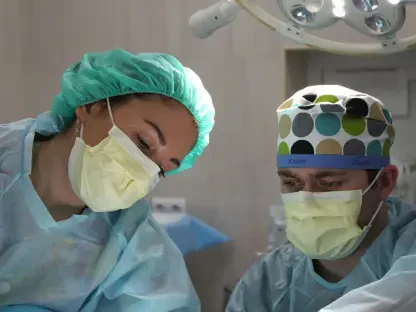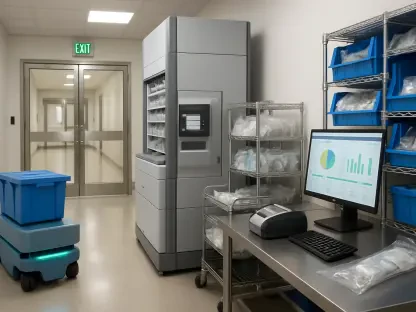The complex world of drug detection faces significant challenges, from widespread drug adulteration to the alarming rise of antibiotic resistance. Traditional methods struggle to provide fast, accurate results, leading to a pressing need for more advanced technology. This scenario sets the stage for an innovative breakthrough by researchers at IIT-BHU, who have developed a novel 3D trimetallic nanodendrite-based electrochemical sensor.
The Need for Innovation in Drug Detection
The pharmaceutical and food industries urgently require precise drug detection methods. The widespread issue of drug adulteration compromises the efficacy and safety of pharmaceutical products. Simultaneously, the pervasive misuse of antibiotics significantly contributes to the growing global health threat of antibiotic resistance. These challenges have underscored the necessity for more efficient and reliable drug detection systems, pushing scientists to explore advanced solutions.
A Revolutionary Nanotech Sensor
Traditional drug detection methods are often hampered by complex preparation procedures, extensive detection times, and high detection limits. Recognizing these limitations, the research team at IIT-BHU, led by Prof. Pranjal Chandra, has developed an advanced electrochemical sensor. The innovative 3D trimetallic nanodendrite-based sensor is designed to address these challenges, offering heightened sensitivity and precision in detecting trace amounts of drugs in various samples.
Key Features and Unique Advantages
The newly developed sensor stands out for its exceptional stability and rapid response time. Its single-step modification process simplifies preparation, making it highly efficient. With its remarkable sensitivity, this sensor can detect minuscule traces of drugs, ensuring accurate identification and quantification. Its broad applicability extends to both pharmaceutical formulations and food safety, making it versatile for practical use in various industries.
Real-World Applications and Environmental Impact
One of the notable applications of this sensor is in detecting drugs in milk samples, a critical factor in ensuring food safety. The device’s ability to identify adulterants and antibiotic residues addresses a significant environmental concern. Antibiotic contamination in agricultural products not only poses health risks to consumers but also contributes to the broader issue of antibiotic resistance. This sensor’s precise detection capabilities present a viable solution to mitigating these risks.
Endorsements and Expert Validation
Prof. Pranjal Chandra, along with his research team members Rohini Kumari and Daphika S. Dkhar, has received significant recognition for this groundbreaking technology. The patented sensor platform has been lauded at numerous national and international conferences, highlighting its potential impact across various domains. IIT-BHU’s director, Prof. Amit Patra, has praised the team’s success, underscoring the importance of this innovation in advancing healthcare and food safety standards.
Future Prospects and Economic Impact
The research team at IIT-BHU is working to evolve the sensor into a multiplexer module capable of simultaneous pharmacological analysis. This advancement promises to enhance healthcare affordability by making drug analysis more accessible and cost-effective. The wider adoption of this technology could revolutionize the pharmaceutical industry, ensuring safer products and minimizing the risk of drug adulteration. Furthermore, the sensor’s potential for detecting contaminants in various food items positions it as a crucial tool for public health.
A Glimpse into the Future of Drug Detection
The pioneering work of Prof. Pranjal Chandra and his team at IIT-BHU marks a significant step forward in drug detection technology. The innovative 3D trimetallic nanodendrite-based electrochemical sensor offers a practical solution to prevailing challenges in drug and food safety. As the device’s functionality expands, it holds the promise of transforming the landscape of drug detection. This advancement not only aims to improve healthcare outcomes but also ensures the safety and quality of products that reach consumers, reflecting the ongoing commitment to addressing real-world problems through scientific innovation.









